| Vintage Pulp | Sep 11 2022 |

Some things are too ugly to be prettied up.
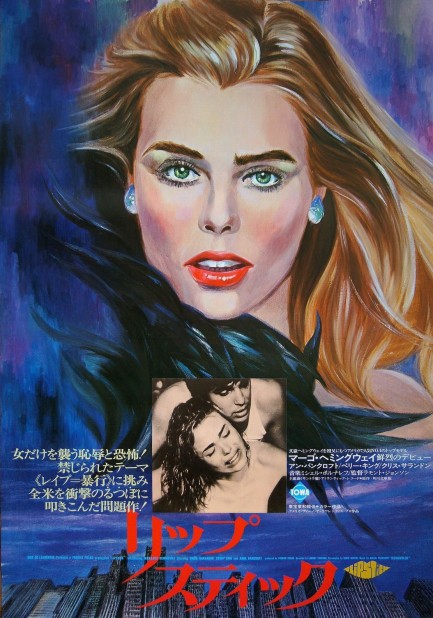
A thriller with two of Ernest Hemingway's granddaughters as stars? We had to check it out, especially when we found this beautiful Japanese promo poster. The movie was titled Lipstick, and the Japanese title リップスティック is identical. Margeaux Hemingway plays a New York City model, and her little sister Mariel Hemingway plays her daughter. They become obsessions for a pig of a sexual predator who insinuates his way into their lives, and things don't go well. At all.
Using rape as the central element of thrillers is not very 2022, even as the actual issue exists in perpetuity. Any film that aims for a realistic depiction, no matter how well meaning, opens itself to charges of exploitation. There's no doubt the filmmakers wanted to wrap an issue inside a thriller, which means despite the beautiful cinematography and a setting in the glitzy, glimmery realm of high fashion, there's a disturbing aura of reality that makes the movie tough to watch in places.
However, this is a serious production and deserves a fair assessment. It's adequately-but-not-amazingly acted by Margeaux, co-star Anne Bancroft is solid, Mariel—who was only fifteen at the time but is playing a character of thirteen, and looks it—does serviceable work, and Chris Sarandon is believable as their assailant. Lipstick falls into the category could-not-be-made-today™, but overall it's worth a watch—and a post-credits discussion. It premiered in the U.S. in April 1976, and in Japan today the same year.

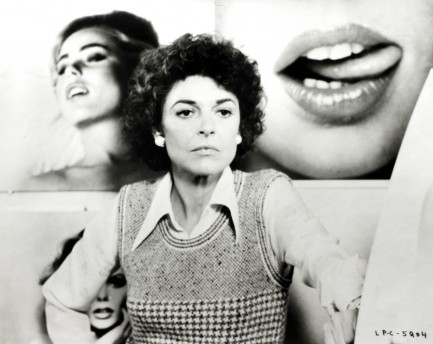
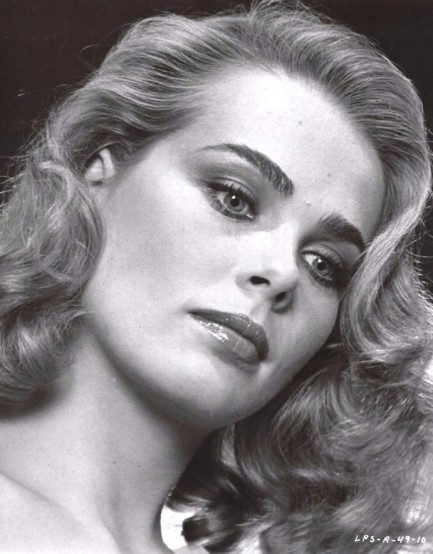
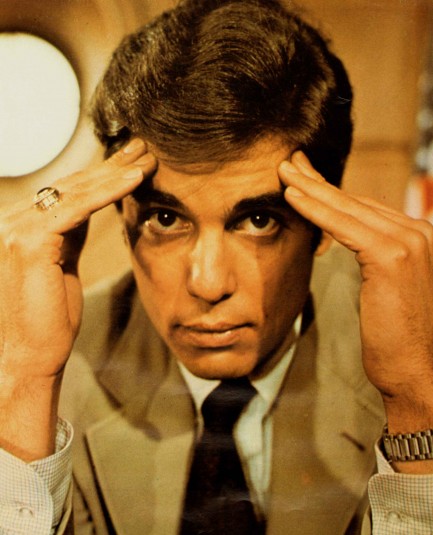
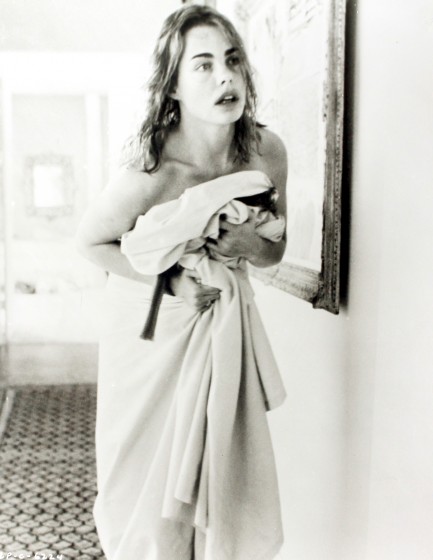
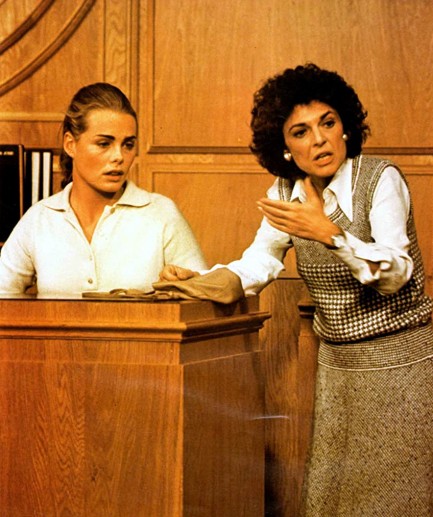
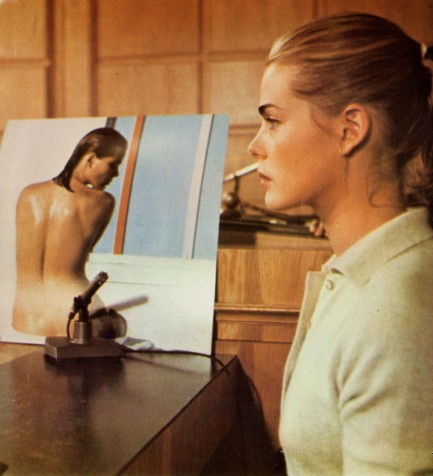
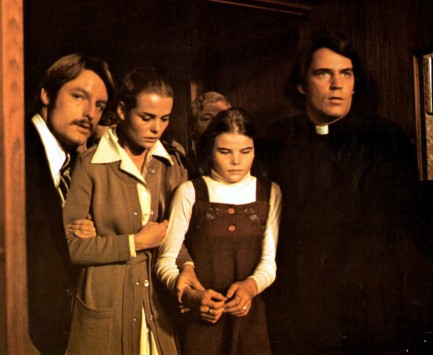










| The Naked City | Feb 11 2013 |

Were two unsolved murders the work of one killer?
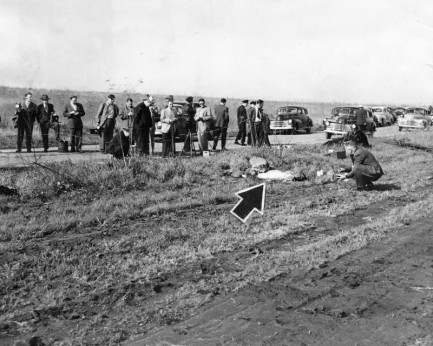
When it comes to mid-century murders in Los Angeles, the Black Dahlia gets all the ink, but during that same winter of 1947 another woman was slain. Like Elizabeth Short, she was found dead in a vacant lot, nude, with massive pre- and post-mortem injuries. Her name was Jeanne French. She had been stomped to death, and her killing became known as the Red Lipstick Murder because of a cryptic message written on her abdomen. It read: “Fuck you B.D.” Next to that it said: “Tex.” The Los Angeles Herald-Express ran a banner headline: “Werewolf Strikes Again Kills L.A. Woman Writes B.D. On Her Body.” By Werewolf, they meant the Black Dahlia killer—the Herald-Express and other papers believed the initials B.D. were a reference to the Dahlia.
Above and below are two crime scene photos of police gathered around Jeanne French the morning she was discovered, and below is a close-up of the message scrawled on her skin. Though the killer had left shoe impressions all around—and on—French’s body, police were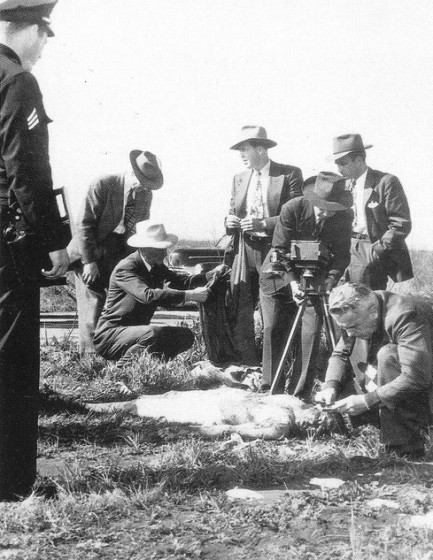
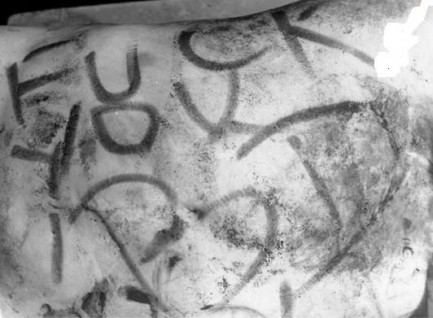 never able to generate any significant leads, and the case went unsolved. They were not sold on the idea of Elizabeth Short and Jeanne French falling victim to the same killer, but many others were convinced. Decades later, a handwriting analysis initiated by writer Steve Hodel tied the Red Lipstick killer and the Black Dahlia killer together. The suspect? Hodel’s father. But the evidence was not considered conclusive enough by police to pursue, and both murders remain officially unsolved. Jeanne French was found dead sixty-six years ago yesterday.
never able to generate any significant leads, and the case went unsolved. They were not sold on the idea of Elizabeth Short and Jeanne French falling victim to the same killer, but many others were convinced. Decades later, a handwriting analysis initiated by writer Steve Hodel tied the Red Lipstick killer and the Black Dahlia killer together. The suspect? Hodel’s father. But the evidence was not considered conclusive enough by police to pursue, and both murders remain officially unsolved. Jeanne French was found dead sixty-six years ago yesterday.

 never able to generate any significant leads, and the case went unsolved. They were not sold on the idea of Elizabeth Short and Jeanne French falling victim to the same killer, but many others were convinced. Decades later, a handwriting analysis initiated by writer Steve Hodel tied the Red Lipstick killer and the Black Dahlia killer together. The suspect? Hodel’s father. But the evidence was not considered conclusive enough by police to pursue, and both murders remain officially unsolved. Jeanne French was found dead sixty-six years ago yesterday.
never able to generate any significant leads, and the case went unsolved. They were not sold on the idea of Elizabeth Short and Jeanne French falling victim to the same killer, but many others were convinced. Decades later, a handwriting analysis initiated by writer Steve Hodel tied the Red Lipstick killer and the Black Dahlia killer together. The suspect? Hodel’s father. But the evidence was not considered conclusive enough by police to pursue, and both murders remain officially unsolved. Jeanne French was found dead sixty-six years ago yesterday. 



































































